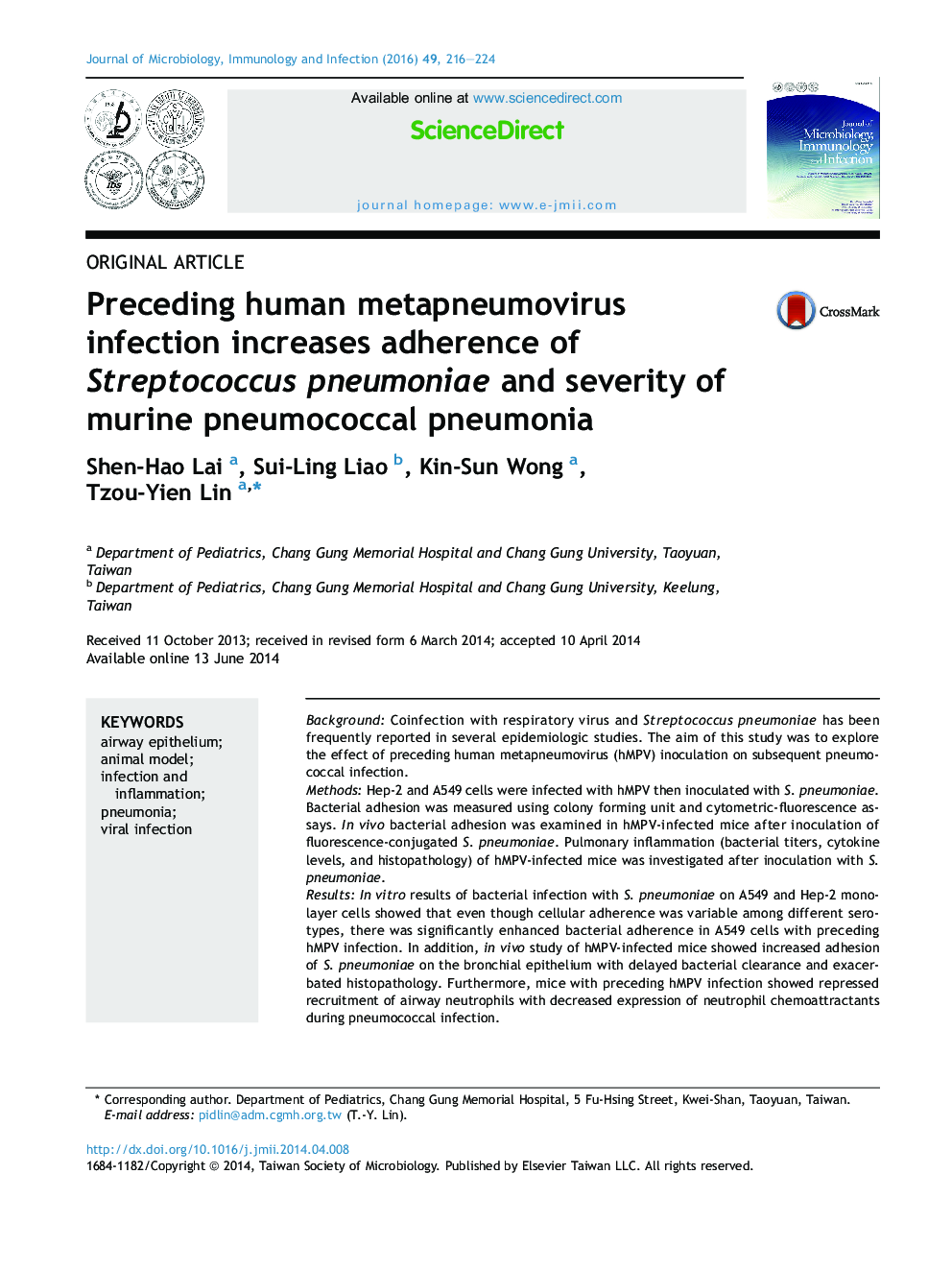| Article ID | Journal | Published Year | Pages | File Type |
|---|---|---|---|---|
| 3377727 | Journal of Microbiology, Immunology and Infection | 2016 | 9 Pages |
BackgroundCoinfection with respiratory virus and Streptococcus pneumoniae has been frequently reported in several epidemiologic studies. The aim of this study was to explore the effect of preceding human metapneumovirus (hMPV) inoculation on subsequent pneumococcal infection.MethodsHep-2 and A549 cells were infected with hMPV then inoculated with S. pneumoniae. Bacterial adhesion was measured using colony forming unit and cytometric-fluorescence assays. In vivo bacterial adhesion was examined in hMPV-infected mice after inoculation of fluorescence-conjugated S. pneumoniae. Pulmonary inflammation (bacterial titers, cytokine levels, and histopathology) of hMPV-infected mice was investigated after inoculation with S. pneumoniae.ResultsIn vitro results of bacterial infection with S. pneumoniae on A549 and Hep-2 monolayer cells showed that even though cellular adherence was variable among different serotypes, there was significantly enhanced bacterial adherence in A549 cells with preceding hMPV infection. In addition, in vivo study of hMPV-infected mice showed increased adhesion of S. pneumoniae on the bronchial epithelium with delayed bacterial clearance and exacerbated histopathology. Furthermore, mice with preceding hMPV infection showed repressed recruitment of airway neutrophils with decreased expression of neutrophil chemoattractants during pneumococcal infection.ConclusionThese results suggest that hMPV-infected airway cells, especially the lower airway epithelium, express increased adherence with S. pneumoniae. Furthermore, hMPV-infected mice showed impaired recruitment of airway neutrophils, possibly leading to delayed bacterial clearance and exacerbated pulmonary inflammation, after secondary infection with pneumococcal isolates.
